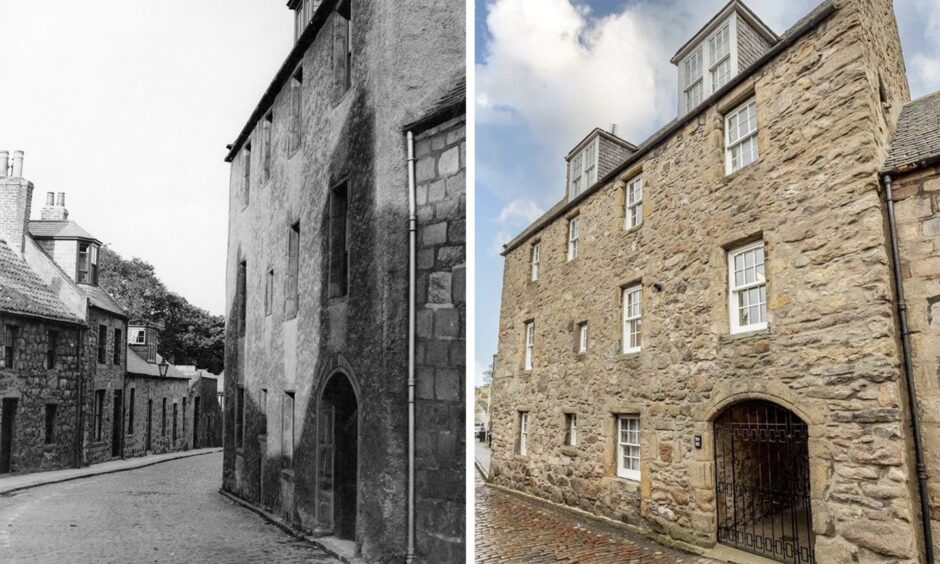
A flat in one of Aberdeen’s oldest buildings – once rumoured to have secret tunnels to St Machar Cathedral – has gone on the market.
The unique property is in the ancient Bede House, an A-listed townhouse in Old Aberdeen dating back to the 1600s.
At nearly 350 years old, the antiquated Bede House has a long and chequered history.
It was built in 1676 as a house for one of Aberdeen’s top civic officers, became a poor house for men, then was divided into council housing in the 1960s.
Now part of the ancient building is on the market for £110,000.
Join us for a look at the property as it is now, and a trip through its origins going back hundreds of years…
Original, sweeping staircase is standout feature in Bede House
Bede House is nestled among other 17th Century buildings at 20 Don Street in Old Aberdeen.
Steeped in history, it’s an attractive, traditional-built granite house and “a pleasant example of old Scots domestic architecture”.
Access is gained through the traditional pend from Don Street leading to the former courtyard behind.
Above, the quaint stair turret is one of the finest features of Bede House and leads to the attic space.
Inside, the first-floor flat is reached by climbing a sweeping, spiral staircase.
The winding granite steps are the original ones ascended by thousands of people over the decades.
Meanwhile the flat’s immediate view onto the historic, cobbled street below has remained virtually unchanged for centuries.
Although its roots are in centuries past, the accommodation is modern.
With neutral decor throughout, it has a spacious double bedroom, dining kitchen, and bathroom built when Bede House was divided into apartments in 1965.
But its large, dual aspect sash and case windows hint at its town house past – having many windows was a status symbol in days gone by.
One of its remaining period features is the sweet, miniature window in the bedroom.
Bede House built during tumultuous time in Scotland’s history
While the contemporary interior is light and bright, and ripe for redecoration, it couldn’t be more different from Bede House when it was built in 1676.
Typical of the Scottish town house style, it was built during the early modern period in Scotland – a tumultuous time of great social, political and religious change.
The three-storey house was the residence of Bailie William Logan and his wife Jean Muir of Stoneywood.
Bailies were civic officers in cities across Scotland, similar to present-day councillors, but often held high roles like magistrates.
There is no doubt as to its origins, a Latin plaque on the stairwell reads: “GULLIELM LOGAN ET EIUS CONIUX JANETA MOIR HANC DOM … AEDIFICARI JUSSERUNT, ANNO DOMINI 1676.”
Roughly translating as “WILLIAM LOGAN AND HIS WIFE JANET MOIR COMMANDED TO BUILD THIS HOUSE … IN THE YEAR OF THE LORD 1676”.
A place to live and entertain, the first floor was originally Baillie Logan’s great hall.
The strict lives of the Bedesmen of Old Aberdeen in 1778
But, it was not until 102 years later it became known as Bede House.
Businessman James Forbes of Seaton gave it to the Bedesmen in 1778 in exchange for their ancient home, Dunbar’s Hospital.
The old hospital was founded in 1531 by Bishop Gavin Dunbar for Bedesmen – to accommodate 12 poor men.
Bedesmen were attached to a church and their duty was to pray for the souls of people on a ‘bede-roll’ in return for donations.
The rules of being a Bedesmen were stringent, they had to be “unmarried men of sixty years; and no women were to be seen in their chambers”.
The old hospital stood in Seaton Park near St Machar’s Kirkyard and was promptly demolished by Forbes, who felt it was too close to his private property.
Aberdeen’s eight Bedesmen moved into Bede House.
They had a strict existence, at 7am one Bedesmen would ring a bell and they would have an hour of oratory pray.
Then they had mass in church followed by dinner, before returning to oratory prayer, repeating the Lord’s Prayer and Angelus 10 times.
After this, they were free to work in the garden or orchards until 5pm when a bell would summon them to another hour’s prayer.
Supper was at 6pm and the door was locked two hours later, afterwards they “could sleep if they wished”, before reciting a hymn at 3am.
The Bedesmen only stayed at the Don Street house for 20 years, but the name lived on.
Rumours of secret booze tunnels
By the end of the 18th Century, Aberdeen’s Bedesmen no longer lived together and instead received a monthly grant.
Bedesmen continued in Aberdeen throughout the last century before the final one died aged 80 in 1988.
But despite its pious past, there were historic rumours that the house once had a secret passageway linked to St Machar Cathedral.
In his book about Aberdeen ‘Walkin’ the Mat’, author Andrew Cluer claimed the Beadle of St Machar used to buy booze for the minister from the nearby grocer’s shop.
The rumoured 500-metre passage enabled the carry-out to be smuggled into the church.
Anecdotal evidence suggested the passageway was still there before the 1960s, along with stashes of empty bottles.
While a former resident said the passageway was discovered during renovations in the 1960s, but there is no record of this being the case.
Building became council housing in 1960s
Bede House had fallen into the hands of the local authority in 1891, and in the early 1960s it was divided up into council housing.
It was the most illustrious council accommodation around, but by 1965, it was considered awkward and unsuitable.
Aberdeen architect Leo Durnin was appointed to reconstruct the interior to create three council properties.
Mr Durnin wanted to give Bede House a fresh look, while restoring original character.
The harling render was taken off the exterior walls to re-expose the ancient stone, and a wrought-iron gateway was installed to improve the dismal pend.
It was decided the ground floor of the main block could only be used as cellars, but the first and second floors were transformed into “handsome flats”.
While the cottage wing next door, a later 1802 addition, became a three-bedroom house.
Family ‘jumped at the chance’ to live in Bede House
The first tenants were Mr and Mrs Ledingham, Tillydrone, who had three children and were living in a tiny prefab.
When they applied to the council for a larger home, they could never have imagined they would have the opportunity to live in such a historic and famous building.
The couple said “they jumped at the chance” to live in Bede House when they were offered the second floor and attic, and “never regretted the decision”.
When right to buy was introduced in 1980, tenants had the opportunity to buy council properties, and Bede House passed into private ownership.
Now, another person has the rare opportunity to own a piece of Aberdeen’s antiquated built heritage.
The property is being marketed by Aberdein Considine, read more about the property listing here:
If you enjoyed this, you might like:
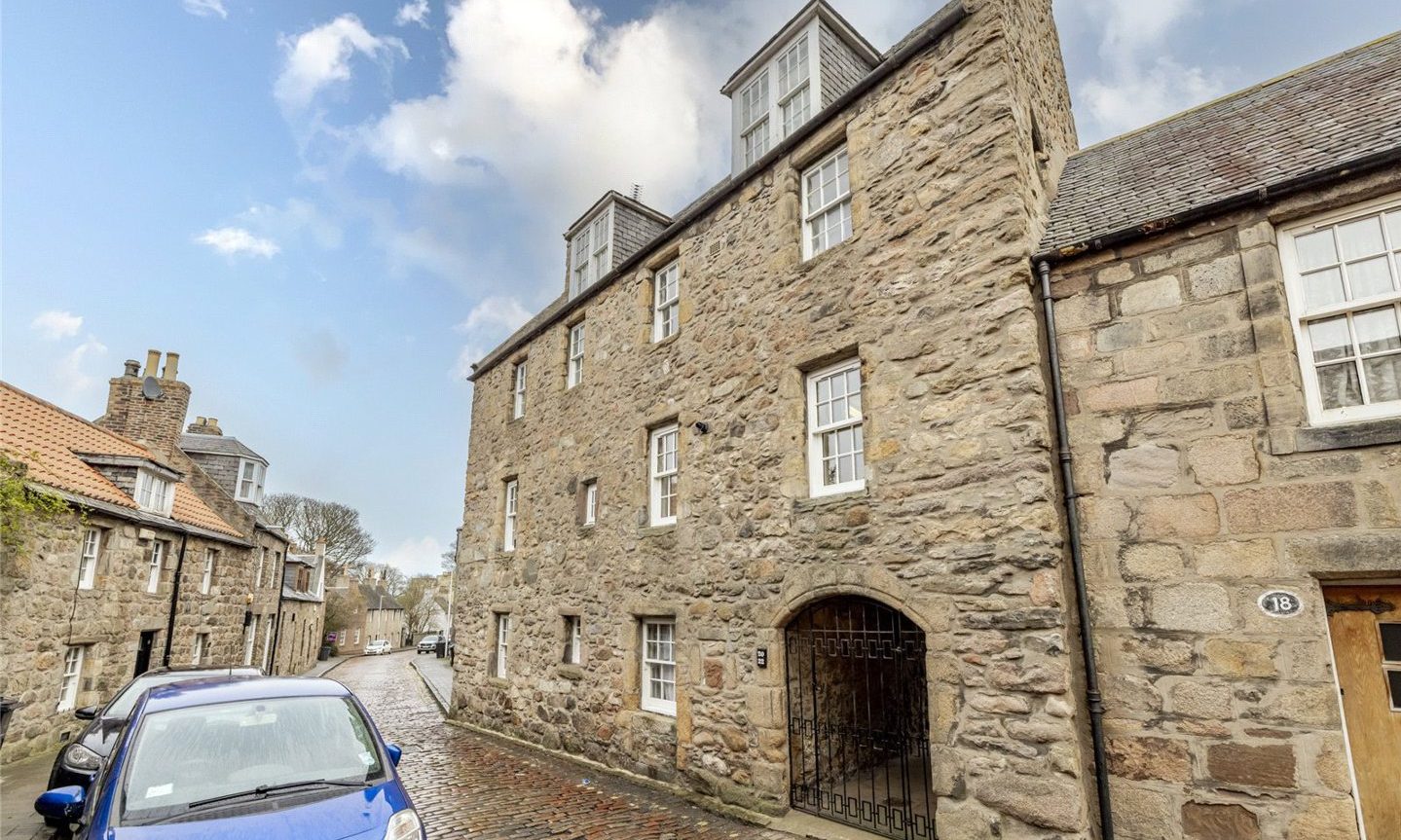


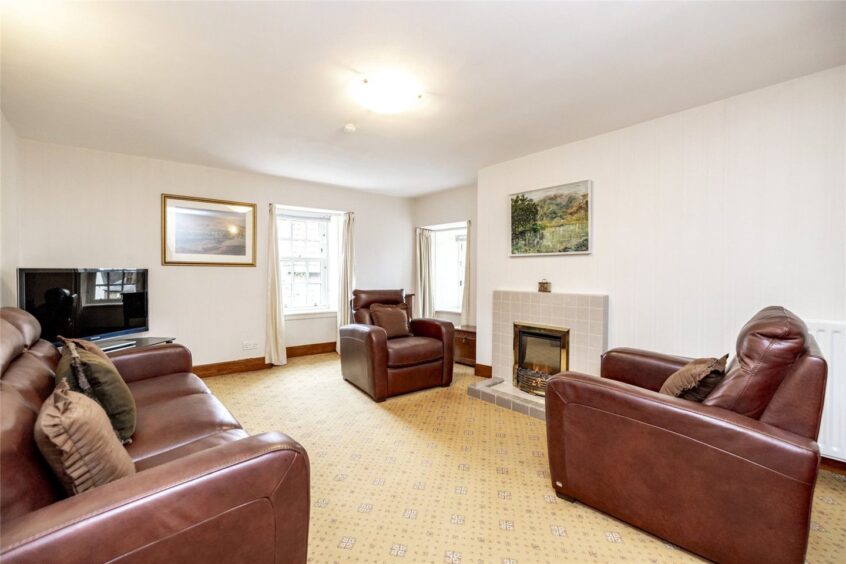
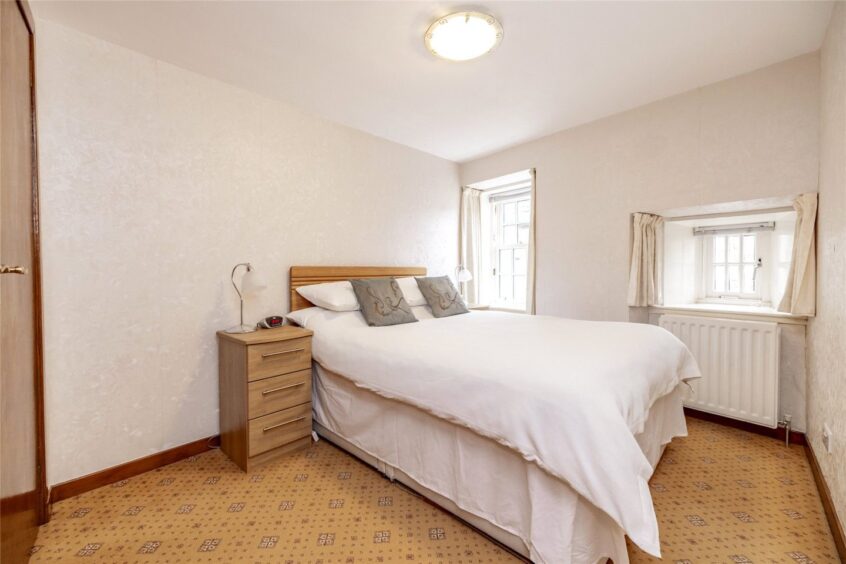

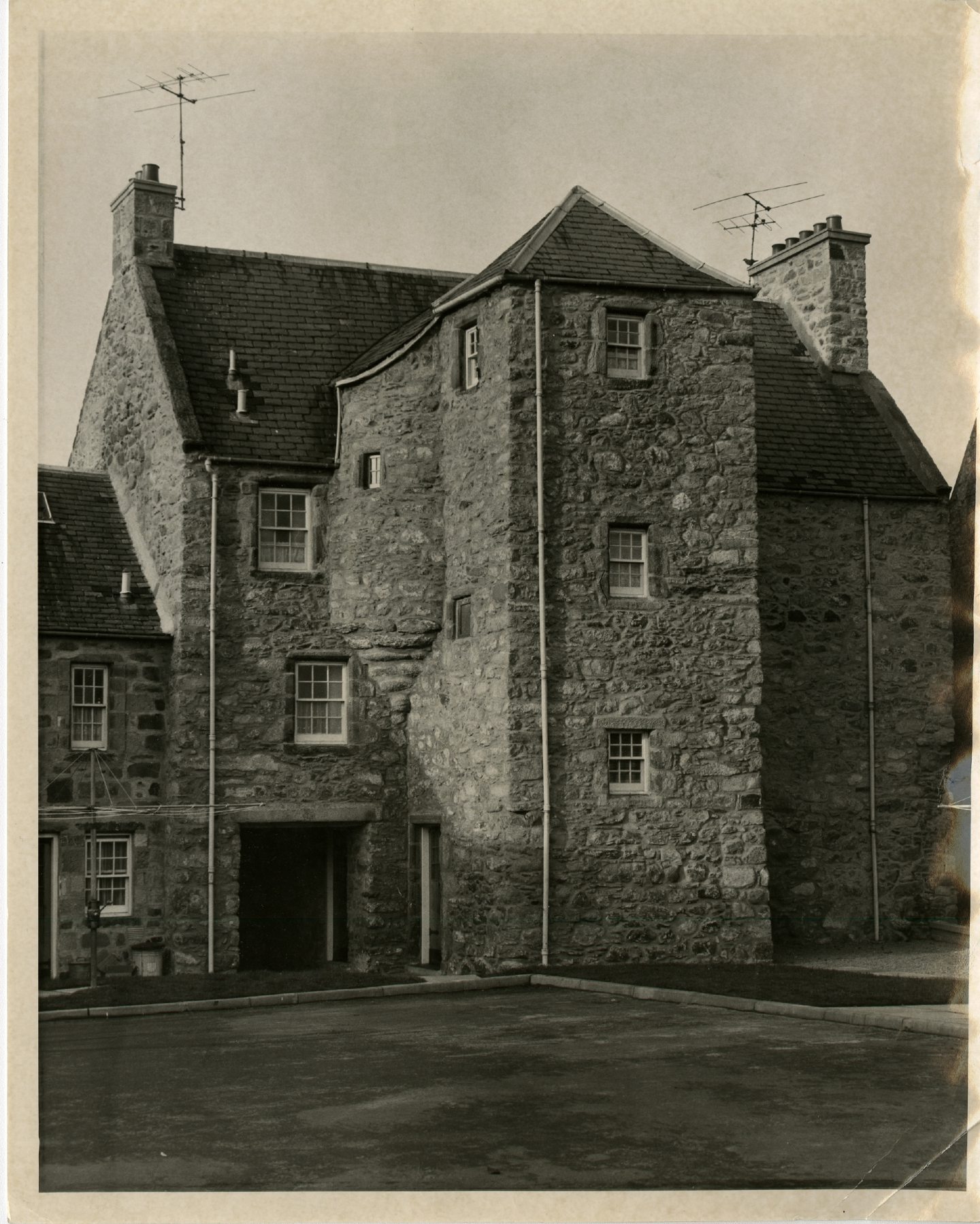
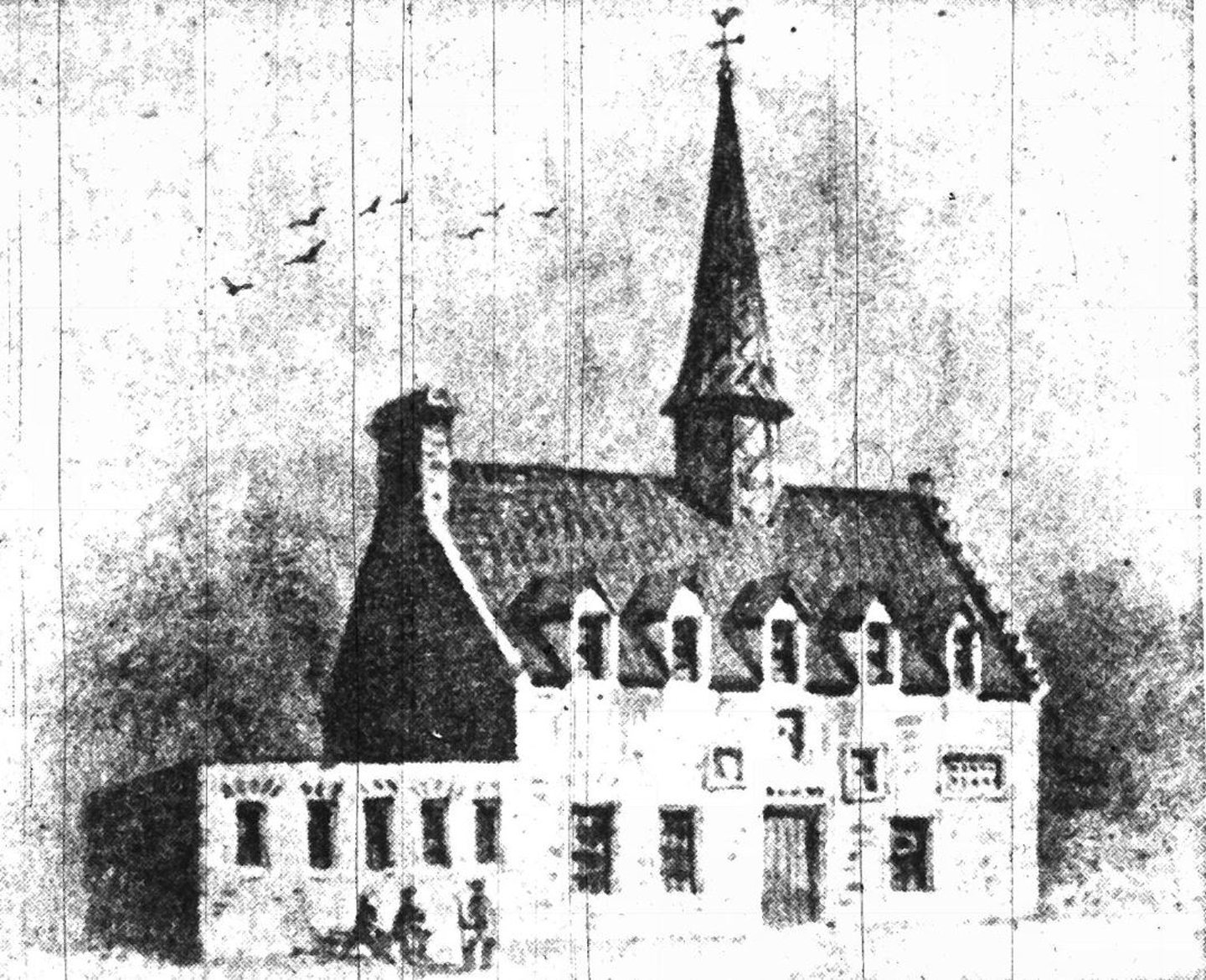
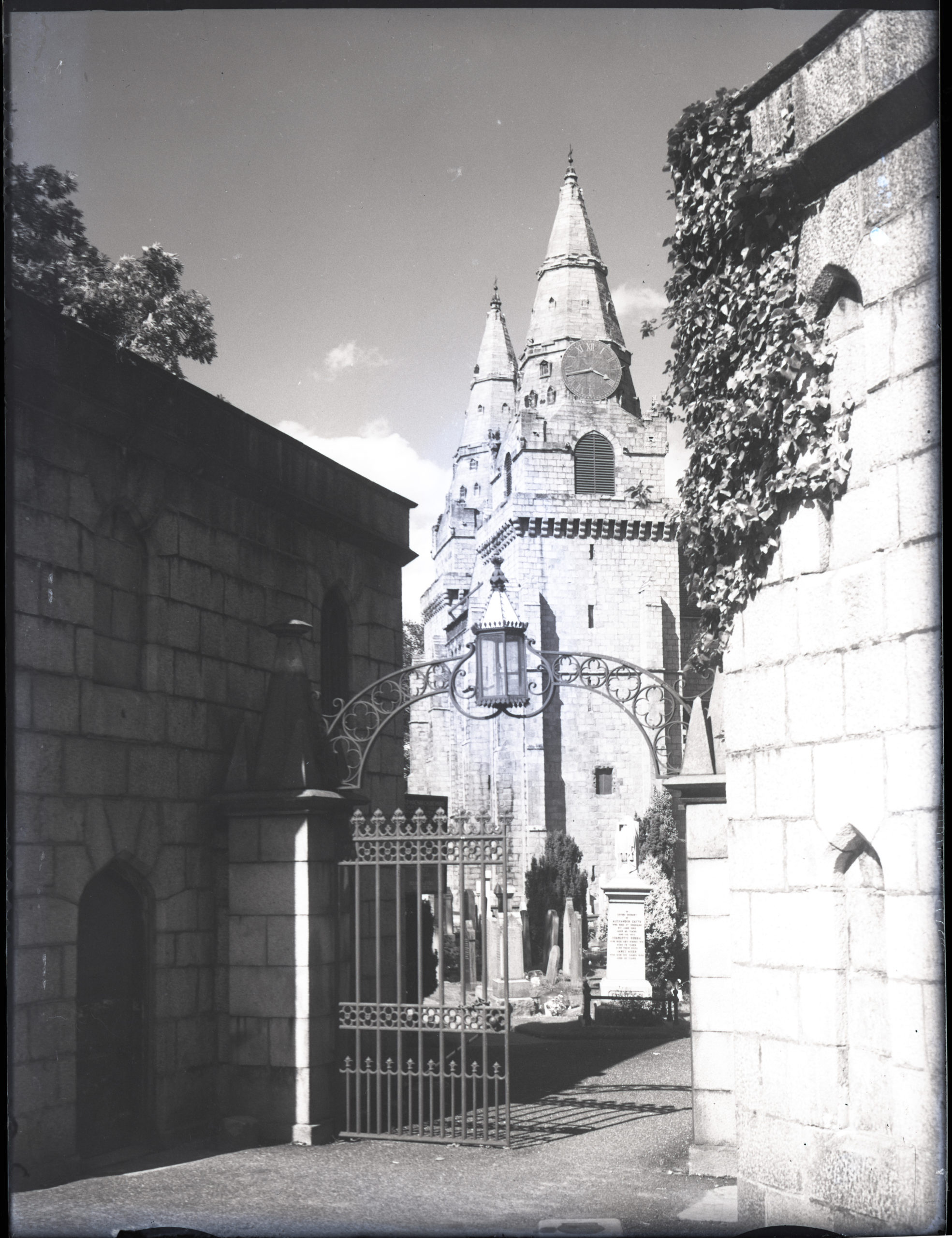
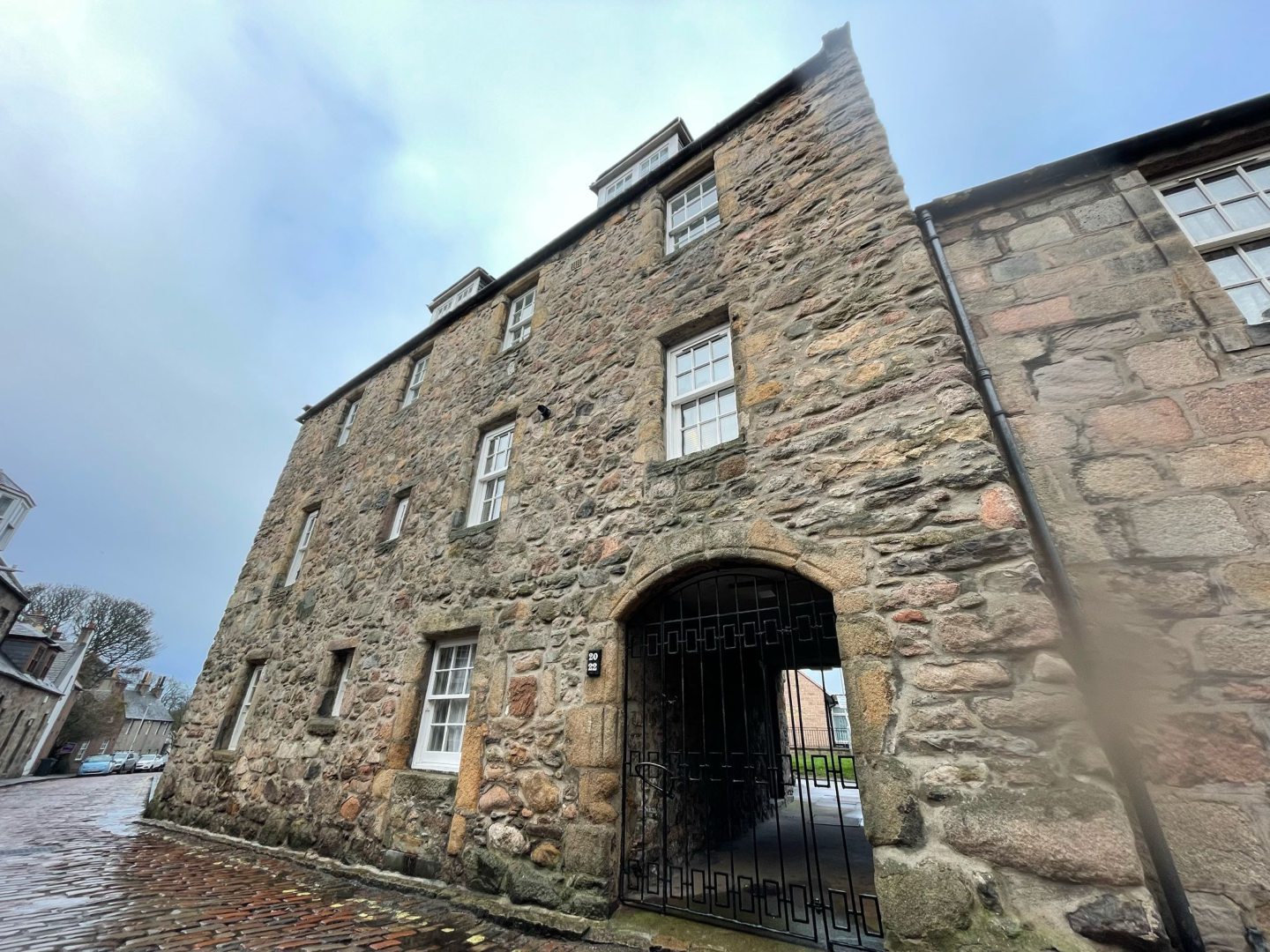
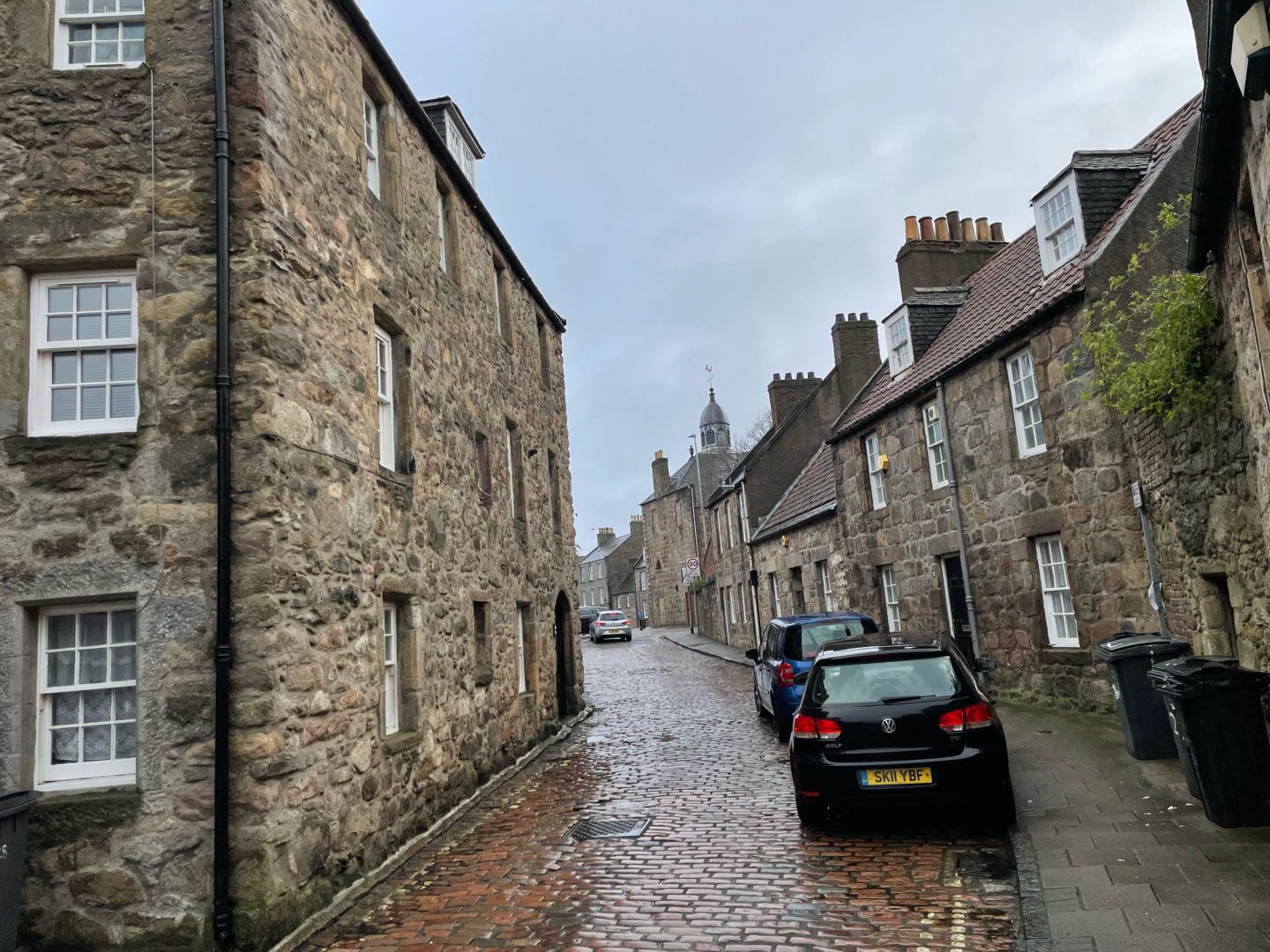
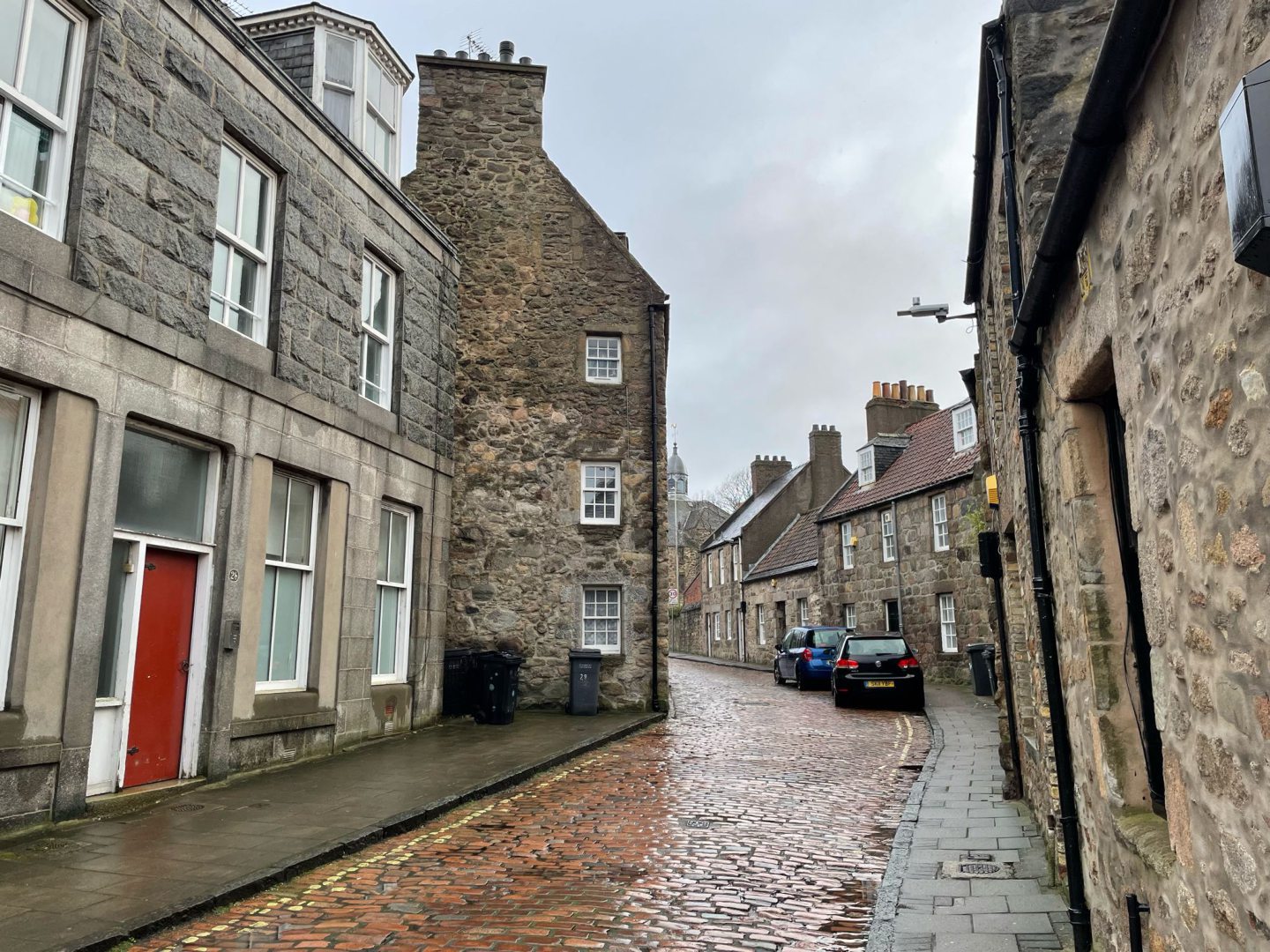
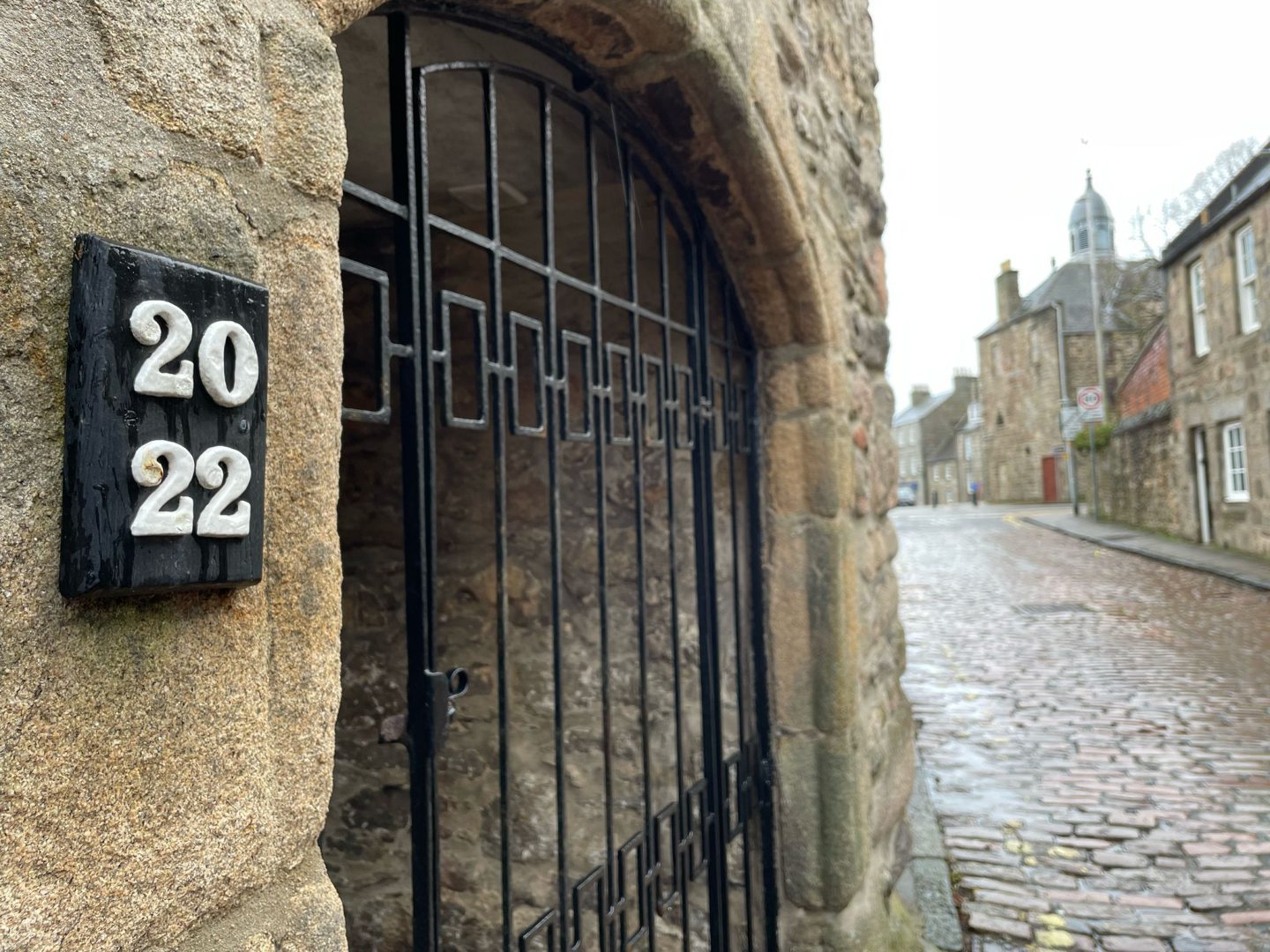


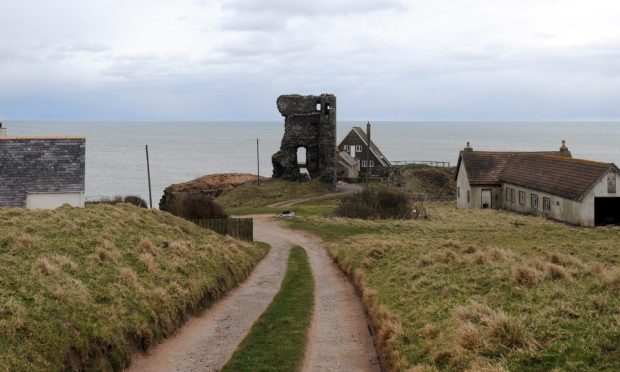
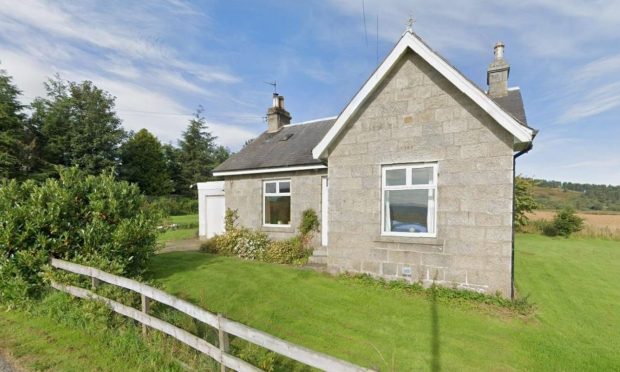
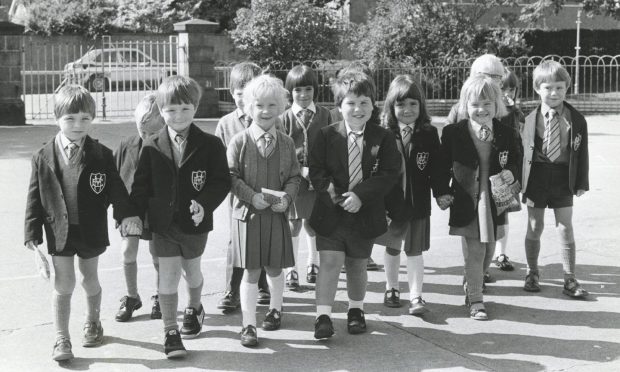

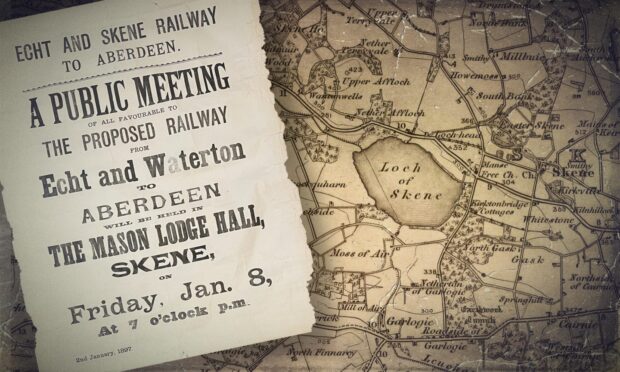

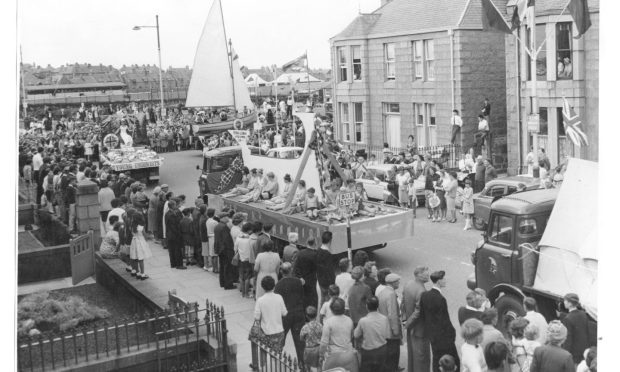
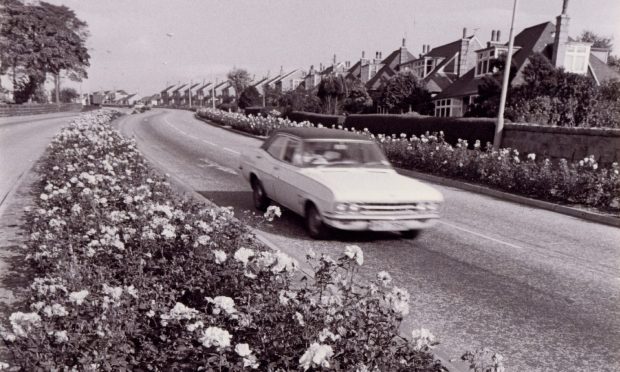
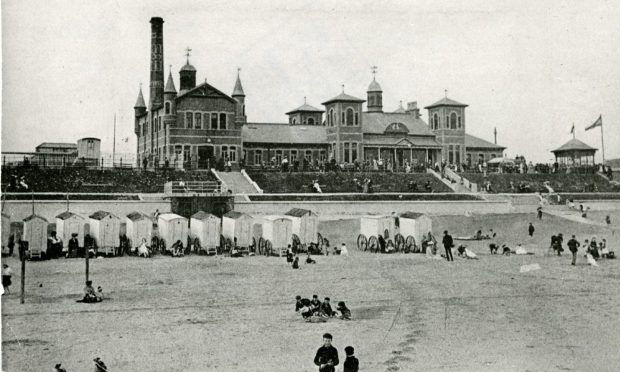
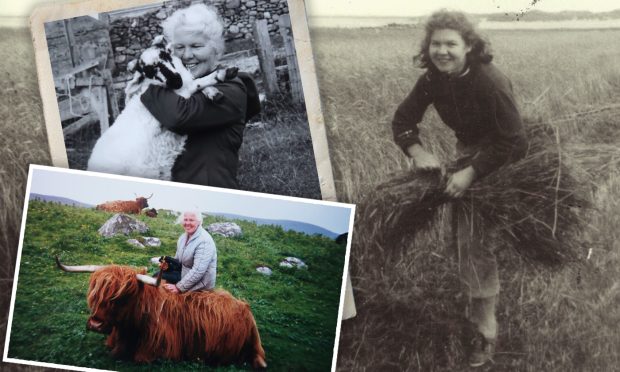
Conversation